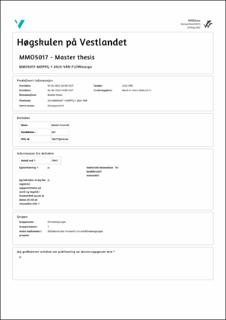| dc.description.abstract | Due to the climate change the world is currently experiencing and the growing emphasis on the need to reduce greenhouse gas emissions, all stages of a fabrication and construction process should be evaluated to be as climate friendly as possible. In this thesis, aluminum has been considered as a hull construction material, more precisely the sea-resistant alloy 5083. The entire life cycle of aluminum is investigated, which includes the extraction of the raw material bauxite, electrolysis, and hot rolling. Additionally, along with the manufacture of the aluminum hull, as well as use, potential for repair, and recycling. A comparison of aluminum and steel as building materials for a vessels hull is another significant main point covered by the thesis.
In this thesis, comparisons between aluminum and steel are made in order to weigh the benefits and drawbacks in terms of price, emissions, energy consumption, strength, and weight. Aluminum's high price and significant energy consumption during production are drawbacks. While requiring significantly less energy to produce, steel is also much more affordable. Aluminum makes up for this later, though, with density that is one-third that of steel, and for vessels an increased speed, less fuel consumption, and even simpler operations will be achieved. Due to the density, less aluminum is required for the same construction than steel, and by comparing energy consumption per kg, the energy required for two similar hulls will not be as different after all. Aluminum has a higher scrap rate than steel, but both metals can be recycled with a significant reduction in energy use.
To examine the differences, carbon fiber, which is also a frequently used hull material, is being compared with steel and aluminum. Although carbon fiber has the advantages of having the lowest density and high strength, its costs and energy requirements are much higher. Moreover, recycling carbon fiber is more challenging and results in a significant loss of the material's strength.
Future strategies and solutions are presented and discussed in order to decrease energy use and emissions associated with aluminum production globally. Utilizing renewable energy sources, of which Norway is primarily a superior producer, must be a top priority. | en_US |

